Sandstone, Scaling and Shooting
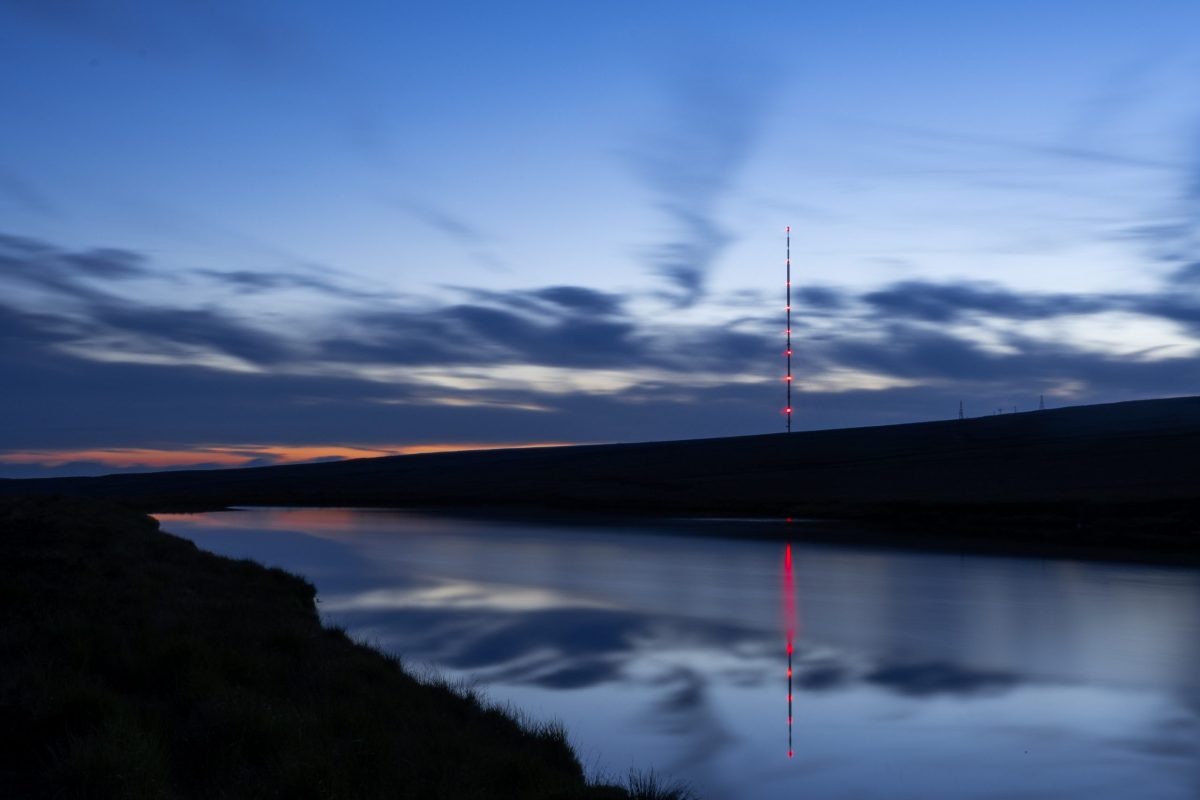
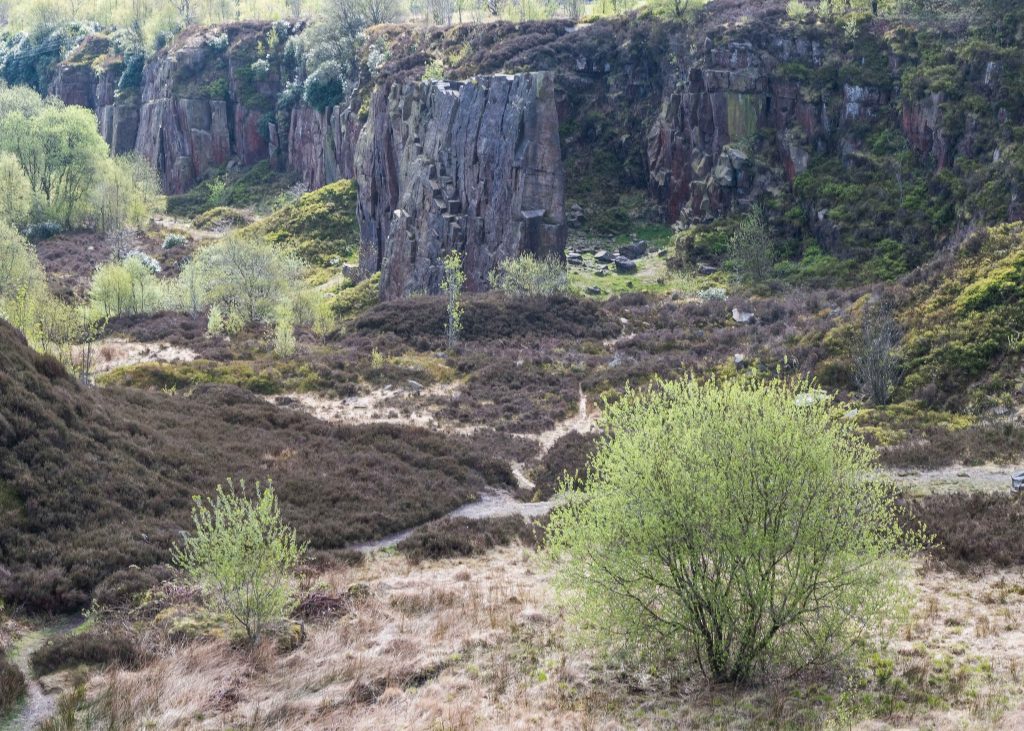
If you follow me on Instagram, you’ll know I have a particular fondness for the bleak, bleached beauty of the West Pennine Moors that I that I live close to. I’m no stranger to solo walking, and now we’re in lockdown, it’s these moors that I head out to, on foot from my front door, navigating a network of ginnels and alleyways through the suburban edges of north Bolton to start my treks along quiet paths across the Rivington “massif”.
Maybe, at a first glance, the moors don’t look to offer much in terms of interest, but if you start looking a bit more closely, evidence of how the moors have played an important part in life will become more apparent, even since prehistoric times and through to the industrial revolution.
When I’m treading familiar paths and getting into that rhythm and pace where you can just let your mind wander, I often mull over how history has changed the way we use the moors and how we’ve adapted them to fit our lives today.
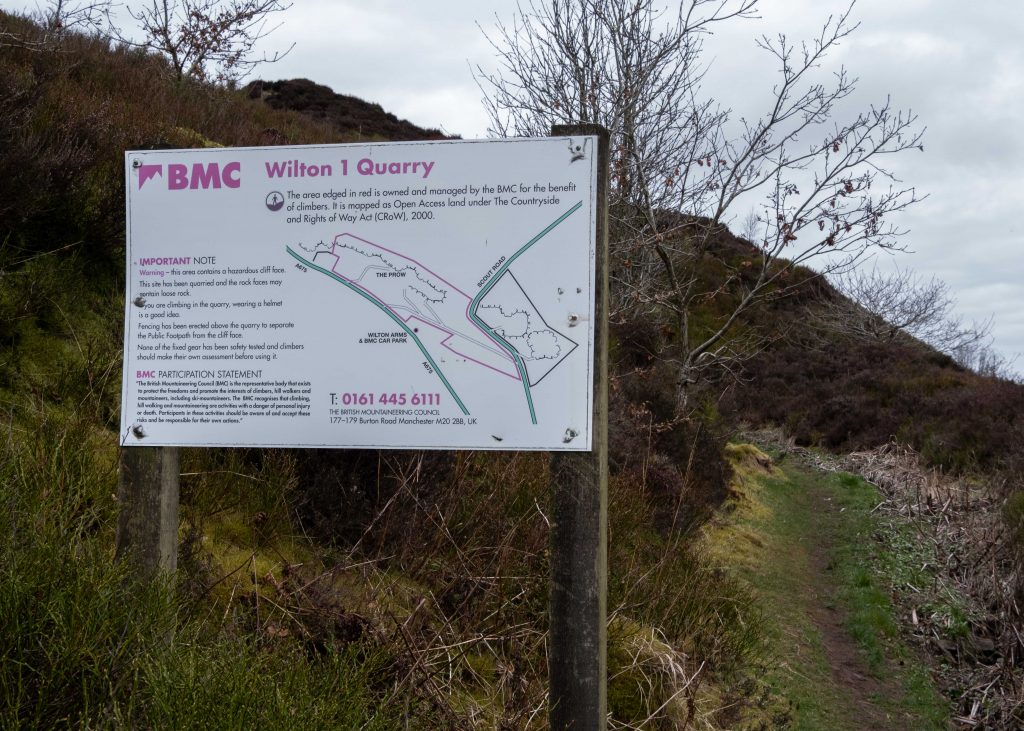
One area that I’ve just discovered (as it’s pretty much hidden from view from nearby roads), is Wilton Quarry. It comprises four separate quarries covering a huge area immediately to the west of the Belmont Road and stretching over to Smithills Moor. As it’s classed as open access land, this gives the start of my walk up to Winter Hill some spectacularly dramatic man-made views of steep, sheer cliffs with almost geometrically perfect straight and sharp angles.
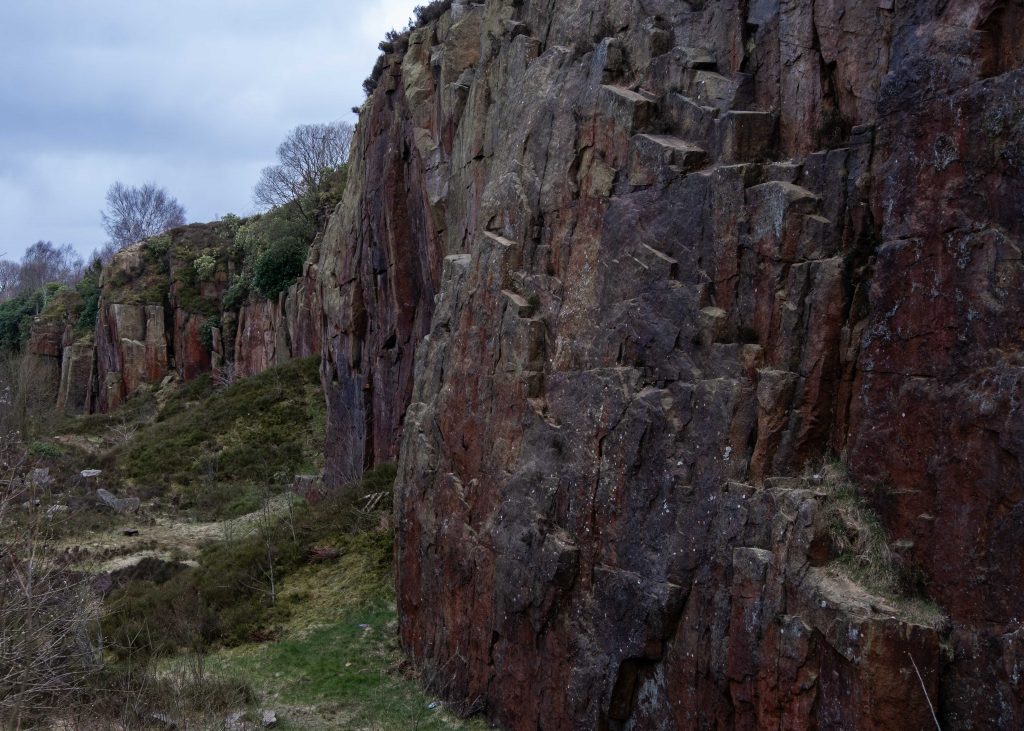
The quarry has a fascinating history. A local entrepreneur, John Horrocks, founded the quarry in the 1700s, providing stone for buildings, roads and even for use in the cotton printing industry. His son, born in 1768 and also called John, followed his father’s business-savvy example, starting cotton production from a building in a corner of the quarry, before moving his growing enterprise to successively larger premises in Preston and, through his influence in business, becoming MP for the town.
As I wander through Wilton 1, I can’t stop myself from imagining the arduous working conditions faced by the quarry men with this highly manual job carrying significant risk of serious injury. But I guess that level of job-related danger was regrettably typical of the employment for everyday folk in this and many other industries at the time.
Round Barn Quarry
“The trouble with fossils” said Sam,
“Is that they just look like rocks”.
The past and present fused
In this disused quarry, high above the reservoir.
Towering faces
Weathered slow by nature,
Ripped apart for civic progress
Now lie neatly stacked, like toy blocks.
Those steam hammer generals
With their masonic secrets
Knew their geology well enough
To keep the cities proud and solid.
Now swallows wheel above
The heather rich in honey bee,
And all is silent, save the subliminal morse
Of fossils singing from within the stone.
Dave Morgan, Published ‘Earth Love’ November 2006
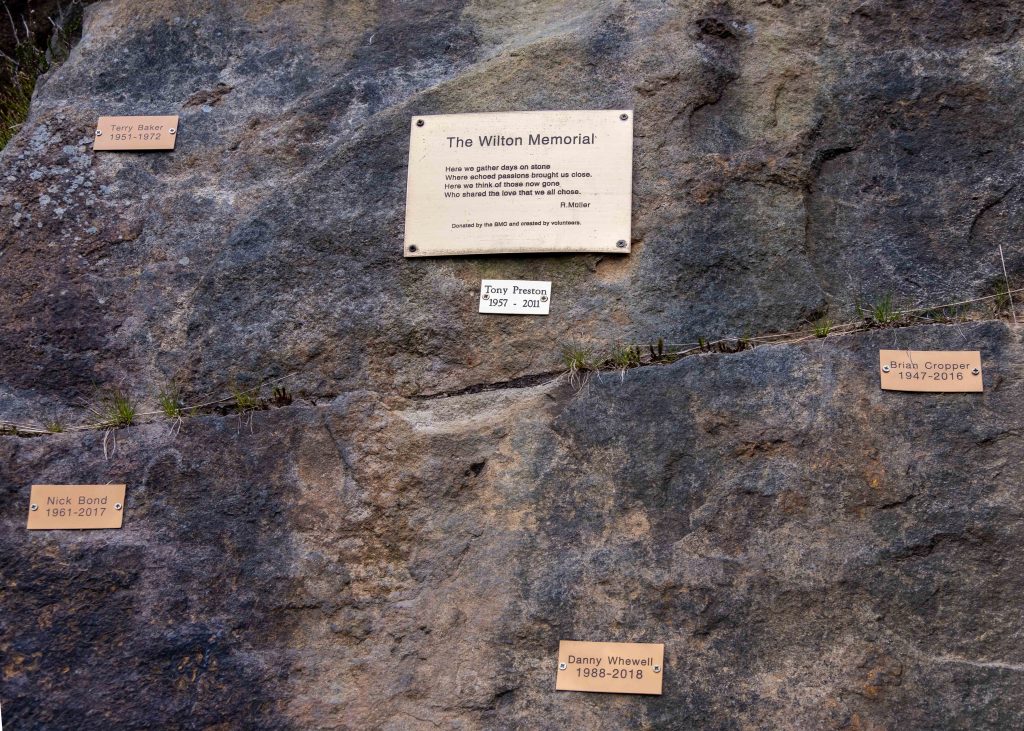
With an almost uncanny coincidence, the quarry is used nowadays for a sport also not unknown for its accepted danger and risks as, partly due to the unique quarrying methods employed by the Horrockses, it’s ideal for rock climbing. Wilton 1 was bought by the British Mountaineering Council (BMC) in 2009 and boasts nearly 500 climbing routes in total across all of the quarries, some with precipitous sounding names such as The Prow and Shivers Arete.

Even before becoming aware of its name, I was fascinated by The Prow. It’s a pretty magnificent and imposing sliver of quarried rock that stands 60 feet high, and as far as I can see from internet searches, there doesn’t seem to be a reason why it was left there in quite that way, but it is certainly one of the most impressive features in any of the quarries.
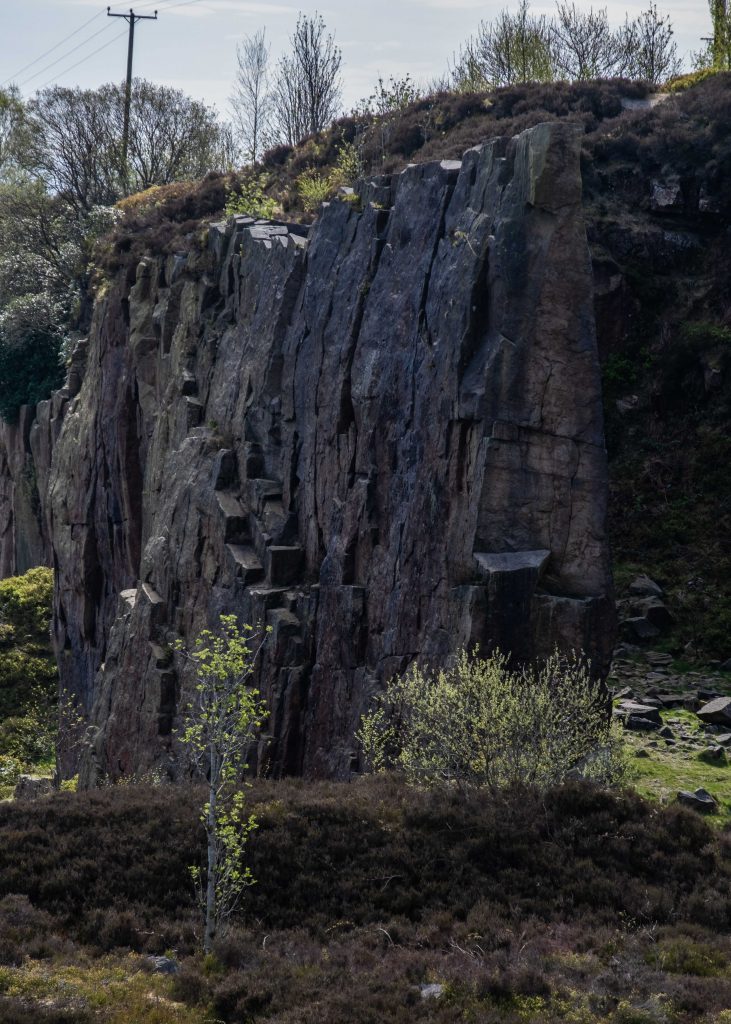

There are paths all along the tops of the cliffs, which, as you’d expect, are clearly marked with warnings of the eye-wateringly sheer drops, but sticking to the paths you avoid putting yourself in danger and, provided you’ve a reasonable head for heights, you can get some fantastic views down into the quarries.


The BMC co-habits the quarries with both the Bolton Rifle and Pistol Club and also the Bolton Gun Club, and while you may or may not be into that sort of thing (actually, I’m not), there is nevertheless a pleasing ordered aesthetic that these clubs bring to Wilton 3 especailly, with its neatly marked-out firing ranges. These ranges have been continually developed since 1912, when the quarries were first used by the military for training purposes.
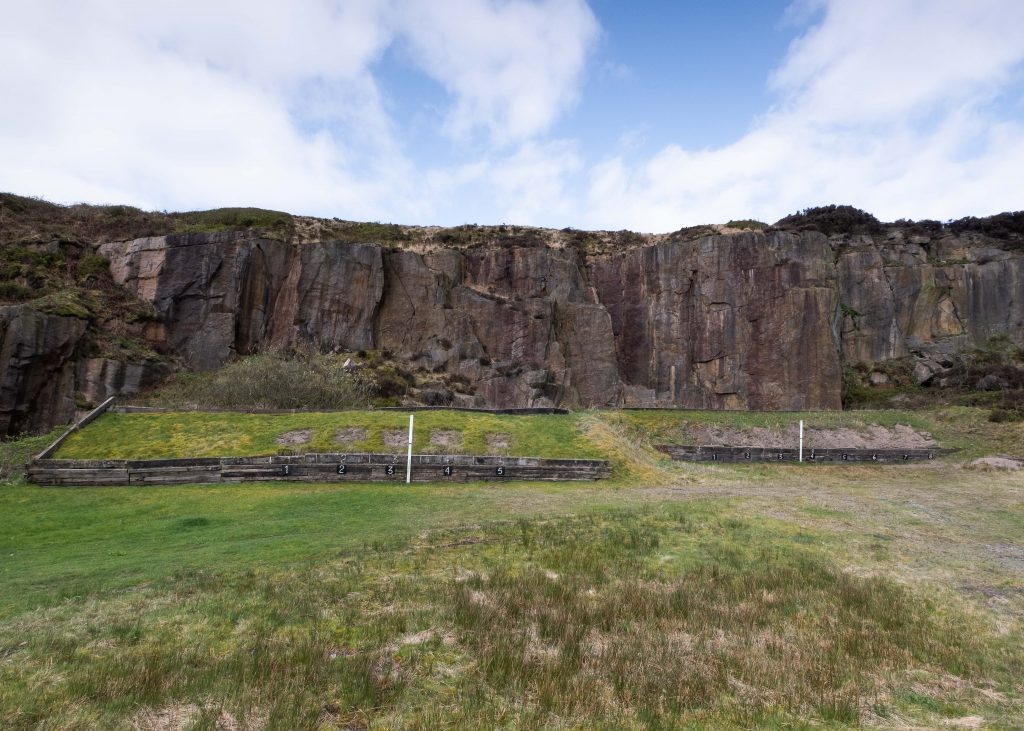
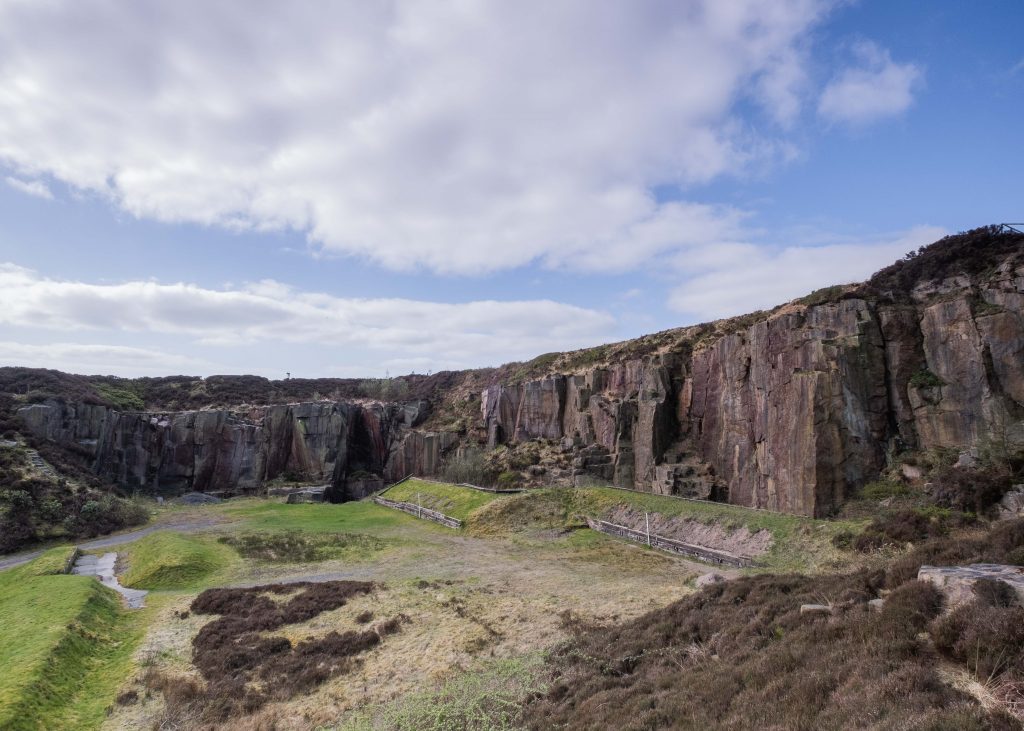
In contrast, some of the other quarries look as though they are still under construction, although I’m pretty sure they’re still used and enjoyed by climbers and shooters alike.
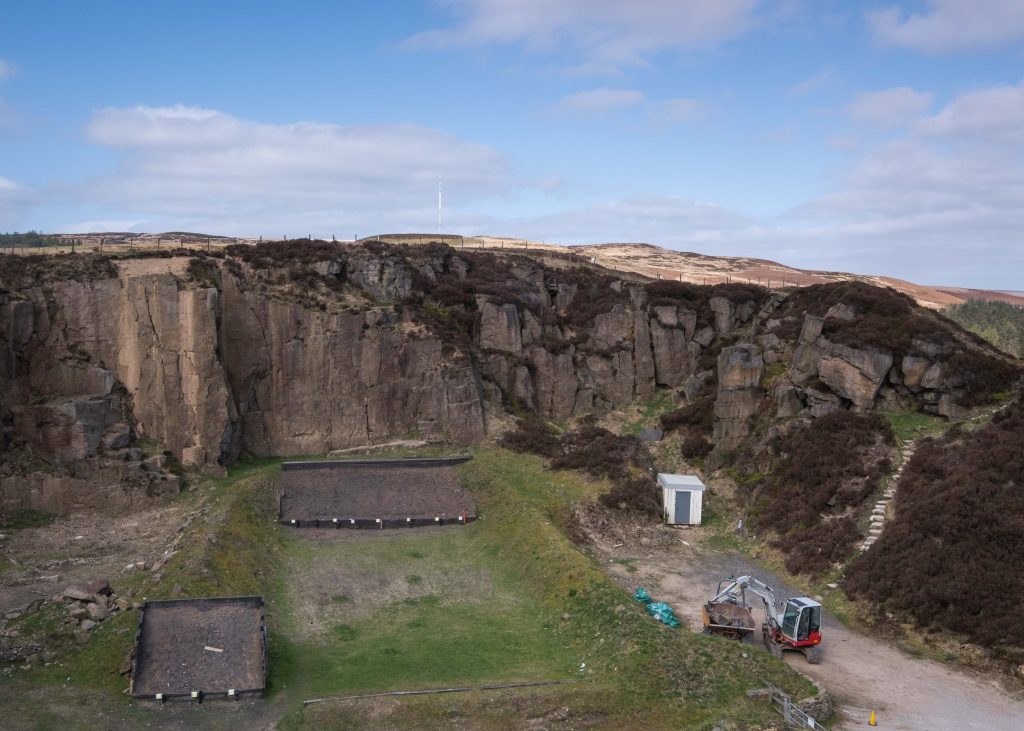
What I like about all the quarries though, is the way these new activities still let nature take its course and mostly don’t look too manicured.
So, unobtrusively and somewhat secretly sitting at the edge of the moor and serving today’s leisure and sporting pastimes, it’s good to see how the imprint of a former industry lives on and continues to serve a purpose in today’s world. I’m pleased the lockdown forced me into finding walking routes from home as I’ll certainly continue to use the paths through and around the quarries to head up to the moors – on the days that the gun clubs aren’t using them, of course!

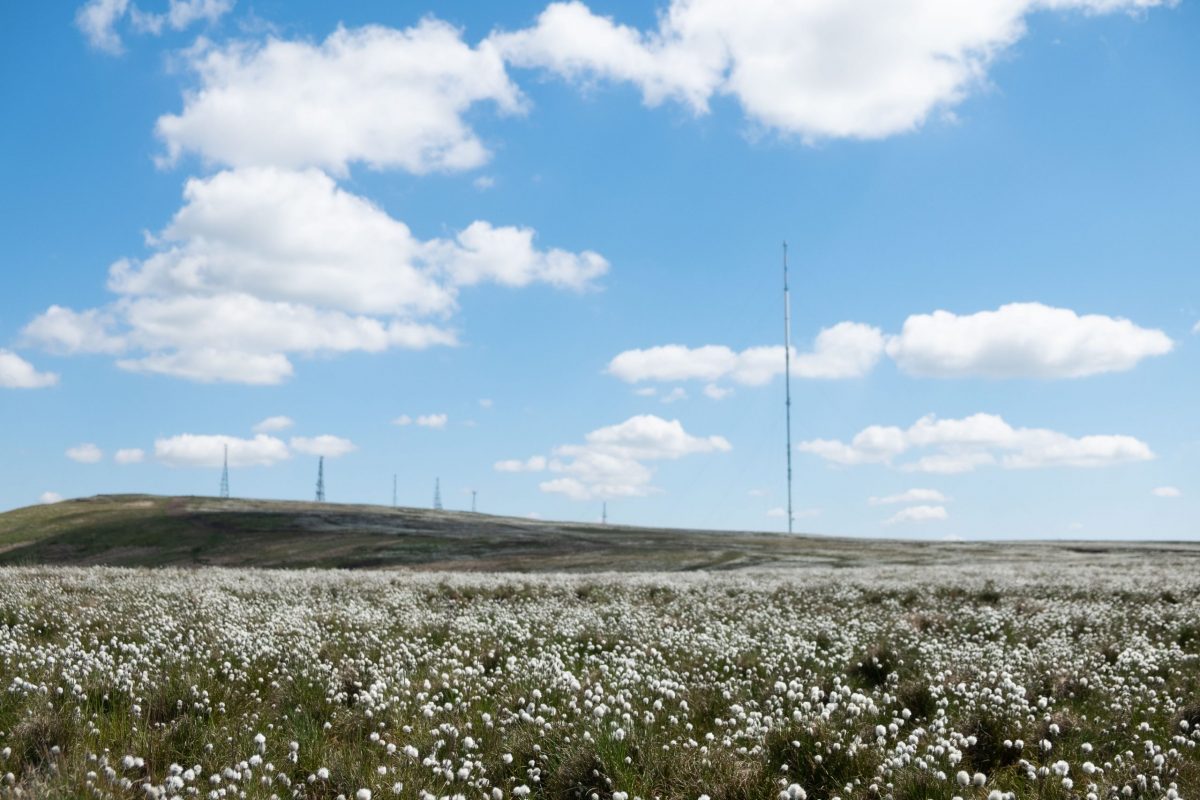
So important in the building of the North West’s towns Julia yet so hidden. Well done in bringing it all to a wider audience.
That’s so true Dave, and from what I’ve read, its provided high quality crafted stone for some important buldings too. I think your wonderful poem works so well, so thank you again for that!
Excellent blog Julia… steeped in history so may things I’ve learnt; thank you for providing valuable information in such an eloquent way. I’ve spent countless hours of aimless wandering across this region and after this I’ve realised there is so much more to explore and learn. Best wishes Mustafa
Thanks so much for your kind words Mustafa. I agree, this area is so rich in history and interest, there’s always something new to discover!
Great to see a non climbers take on these quarries. I was introduced to them as a teenager many years ago and just as there is no bad wine in youth, there is no bad climbing. I learned the climbing trade there and though I have not been back in many a year I still retain an affection for the place.
Hi Roger,
Thank you – I’m glad you enjoyed the read. I love the quarries, they’re so striking and impactful from a photographic perspective. I’ve been told this area was where climbing started in the UK, so it feels as though I’m walking through something quite historic whenever I head up through the quarries on my way to the masts on Winter Hill. I definitely get the impression these quarries are regarded affectionally by many people!
Hey by heck lad, be bloody careful as my dad once said to me, As we walked or drove, from the top of scout road, down to Belmont rd.
Me and my mates visited many times, I believe from an incident that happened in the late 70s to early 80s.
I can’t remember the actual date although, the incident was on the front page of the Bolton evening news, and published in the following morning’s national papers.
That my brother, had drove off the top of the old shooting quarry on a motorbike in an attempted suicide.of which he survived.
But suffered with many broken bones and scares
Really sorry to hear of that tragic accident. I hope you and your brother are doing OK.